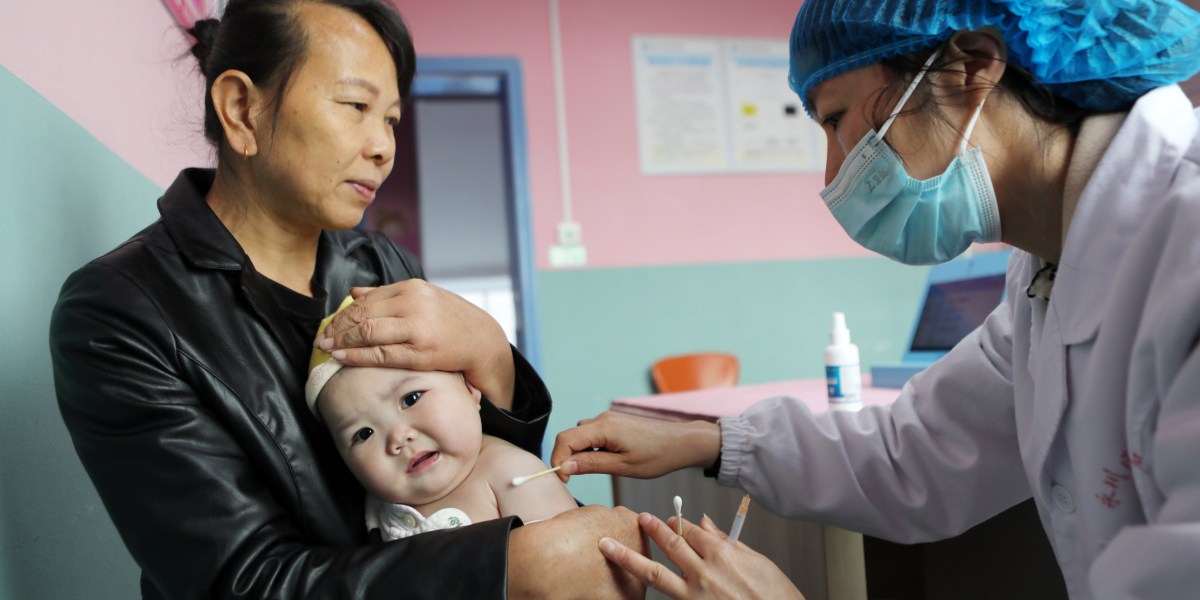Infection
The World Health Organization is investigating mysterious cases of pneumonia among Chinese children. Here’s what you need to know
The World Health Organization is requesting detailed information from China on an increase in respiratory illnesses and pneumonia among the country’s children, using language similar to a Jan. 5, 2020, missive regarding the pathogen the world would come to know as COVID-19.
Officials from China’s National Health Commission reported an increase in respiratory illness at a Nov. 13 press conference, the international health organization said in a Wednesday news release. On Tuesday additional reports were received of pneumonia of an unknown cause in children in northern China.
The WHO on Wednesday said it had requested additional information from the Eastern superpower, including patient lab results and data on the circulation of known respiratory pathogens like flu, COVID-19, and RSV. It also requested details on how such circulation is affecting health care capacity.
Likely a known pathogen, experts say
Experts Fortune spoke to late Wednesday said they found the cases concerning and called on China to be forthcoming with its data.
But the limited information provided so far doesn’t point to the development of a new pathogen, they said.
The first suspicion of Dr. Michael Osterholm—director of the University of Minnesota’s Center for Infectious Disease Research and Policy (CIDRAP)—is “a series of already recognized respiratory pathogens,” due to the fact that illness are reportedly occurring in children only.
“If it was a new pathogen, it would be showing up in kids and adults equally, ” he told Fortune.
Dr. Amesh Adalja, an infectious disease specialist and senior scholar at the Johns Hopkins Center for Health Security, agreed, telling Fortune that while information is sparse, “it would not be surprising if it’s a constellation of various respiratory pathogens together causing clusters of illness.”
Some reporting has pointed to mycoplasma pneumoniae, an Atypical bacteria that can cause lung infection, as a potential cause, he said.
“It will be important to gain insights into what pathogens are being tested for and what results are available,” he added, calling the “historical lack of transparency that is emblematic of China’s authoritarian government” problematic, and likely to result in a delay of information.
Dr. Stuart Ray, vice chair of medicine for data integrity and analytics at Johns Hopkins’ Department of Medicine, called the infections “concerning” and said “rapid response and evaluating is the right path.”
“But it’s not so out of the ordinary that we should presume this is due to a new pathogen,” he told Fortune. “We can hope that authorities there will evaluate rapidly, take appropriate steps for mitigating spread, and be forthcoming about the nature and severity of the epidemic.”
Dr. Eric Topol, a professor of molecular medicine at Scripps Research and founder and director of the Scripps Research Translational Institute, said it was “impossible to make a comment based on such limited information.”
But he called for “careful watch on this and full transparency from the folks in China” in a text to Fortune.
WHO calls for masking ‘as appropriate’ in China
While the WHO seeks additional information, it recommends that Chinese citizens obtain recommended vaccinations, maintain distance from those who are ill, stay home when sick, wear masks “as appropriate,” ensure good ventilation, wash their hands, and obtain medical care as needed.
Northern China has reported an increase in flu-like illness over the past month, when compared to levels seen during the past three years, according to the WHO.
Earlier this month Chinese officials attributed the rise in mysterious pneumonia cases among children to the circulation of viruses like flu and RSV, as well as the lifting of COVID-19 restrictions.
But that lift occurred a year ago. Still, Osterholm said, it’s possible that China sees a surge in other viruses this respiratory season, he said—the first full one since the country’s COVID restrictions relaxed late last year.
Last year many experts blamed a so-called “tripledemic” in the U.S. and other Western countries on a contested concept known as “immunity debt”—the price society must pay for adhering to pandemic precautions and, thus, receiving less exposure to other viruses since 2020.
But while respiratory season came early in North America and other countries last year, it didn’t cause more deaths than usual, he points out—nor were “lock downs” in the United States true lock downs. In U.S. states stay-at-home orders lasted only months—not years, like in China—and didn’t apply to “essential workers.” In Minnesota, that meant 82% of the state’s population was exempted, Osterholm said, adding, “that’s not a lock down.”
China, with its much more stringent regulations, truly locked down, he said. And, thus, it might expect to see a resurgence of other viruses this year.
“I think you’re going to see more of this happening around the world with seasonal respiratory viruses,” he said. The next respiratory season or two may be atypical, he added—perhaps due to “immunity debt,” or perhaps due to viral interference—a phenomenon in which competitive viruses like COVID “cancel out” other viruses like RSV and some flu strains for a period of time.
As for what exactly is going on in China, two pieces of data are needed, according to Osterholm: “accurate epidemiological data describing who is sick, and lab-based data.”
“Then we can answer in short order what’s going on.”
This is a developing story and will be updated.

